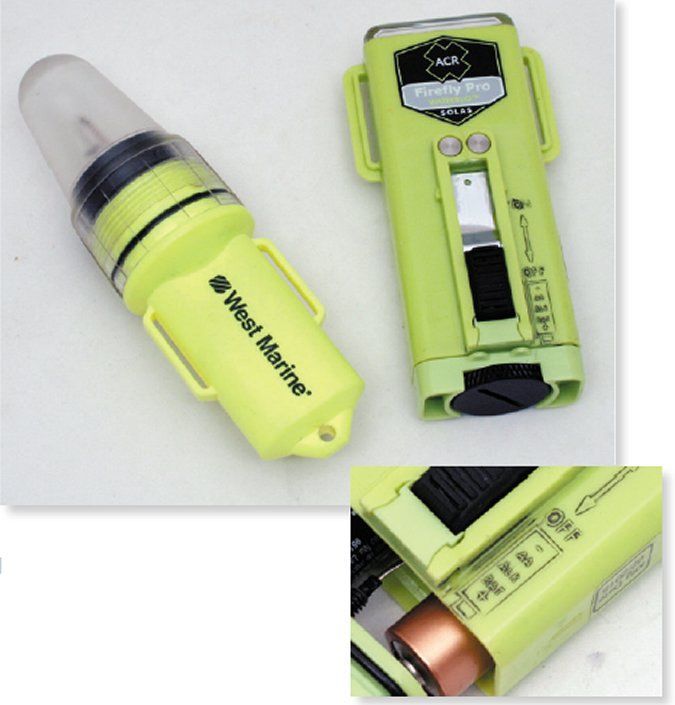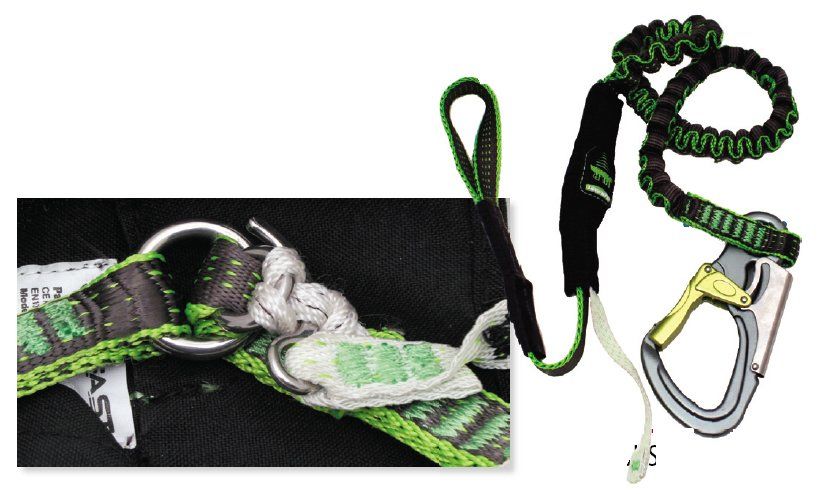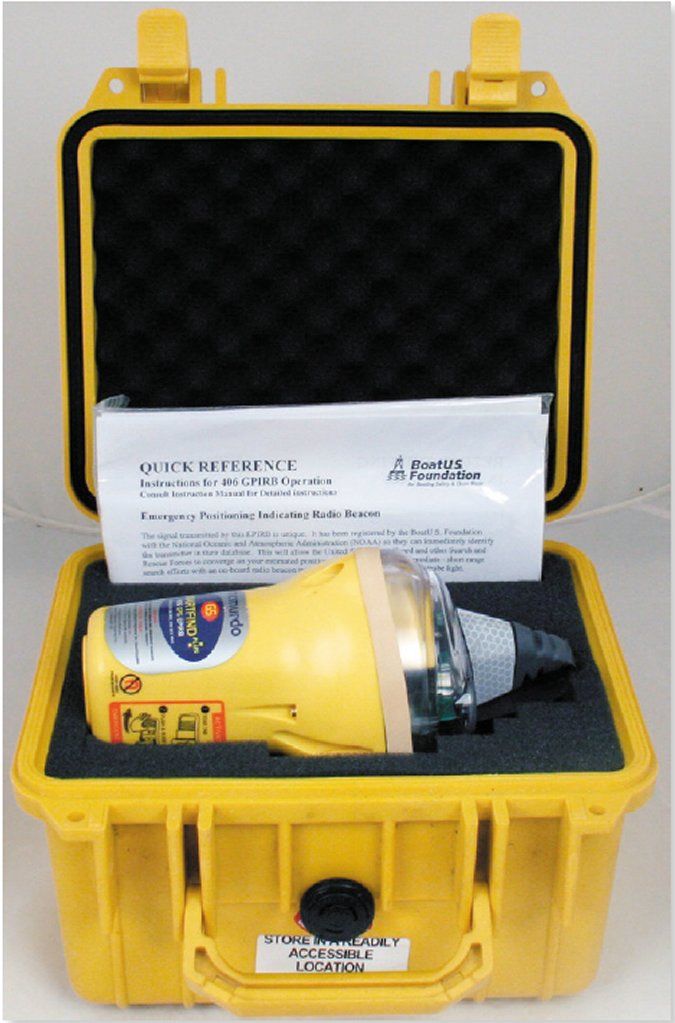We recently checked out some equipment that illustrates the challenges of designing and marketing new safety gear, one of the more tightly regulated sailing-equipment categories.

ACR Firefly Pro Waterbug
Made by ACR Electronics, the Firefly Pro Waterbug ($54) is a water-activated, personal strobe light for locating man-overboard victims. The latest version of a 35-year-old product, it features several updates. Power-saving LEDs have replaced the xenon strobe, the orange body is now neon yellow-green, and the light has four modes: water-activated strobe, manually activated strobe, manually activated SOS strobe, and flashlight. (Having flashlight and strobe is handy, but complicates tracking of battery life, not ideal for emergency use.)
ACR advertises 3.5 miles of visibility and 56 hours of battery life. These lab-tested claims are optimistic in real-world use. Our test unit did not last 24 hours on a set of new AA alkaline batteries, and its visibility was less than 1.5 miles, no better than prior units weve tested (see PS July 1, 2001 online for a detailed report on rescue lights). ACR suggested we test another unit because, they said, ours was a pre-production unit, one of many given to reporters at a boat show. We will update performance data from a store-bought unit that we are currently testing; look for the results in an upcoming issue.
Bottom line: We are hesitant to recommend the light until our followup performance tests are complete. Stay tuned.

Glowfast Tether
The most intriguing feature of Glowfast Marines Glowfast safety tether isn’t its glow-in-the-dark striping; its the high-load release system that allows the wearer to free himself in situations when a standard snap shackle would fail to open (something PS explored in the April 2011 issue; see online). Using a slip-ring release similar to whats used in extreme sports and parachutes, the Glowfast is the only tether weve tested that releases effortlessly at loads over 250 pounds. The problem is that once you trip the release, youre advised to take it to an authorized dealer so it can be repacked. However, you can repack it yourself-we did-and Glowfasts website links to a video that shows how to do it.
What caught our attention was the lack of a snap shackle at the harness end. This keeps cost down, but should you need to release yourself in a non-emergency-disentangle yourself from a genoa sheet, for example-you cannot quickly clip yourself back in. Testers also noted that the release can trip accidentally in confused conditions on deck, when you need it most.
Bottom line: If you like the Glowfast tether concept, add a snap shackle at the harness side.

BoatUS EPIRB Rental
Although the price of a 406 EPIRB has dropped in recent years, a new one still runs about $500. But what many buyers don’t figure into that equation is the cost of a battery replacement, which can be as much as the unit itself. One alternative to buying an EPIRB, for those who cruise infrequently, is renting one from BoatUS.
We rented a McMurdo Category II G5 from BoatUS for $65 per week; it retails for $465. Rental was dead simple. Service was quick and responsive.
Our only gripe is with the instructions, which are in a Ziplock baggy inside a tamper-proof box. In our opinion, two sets of activation instructions should be given, one with the box, outside for review, and one inside the box, in case the one outside is lost. Both should be laminated.
Bottom line: BoatUSs EPIRB rental service is efficient but could be improved with minor tweaks.







































